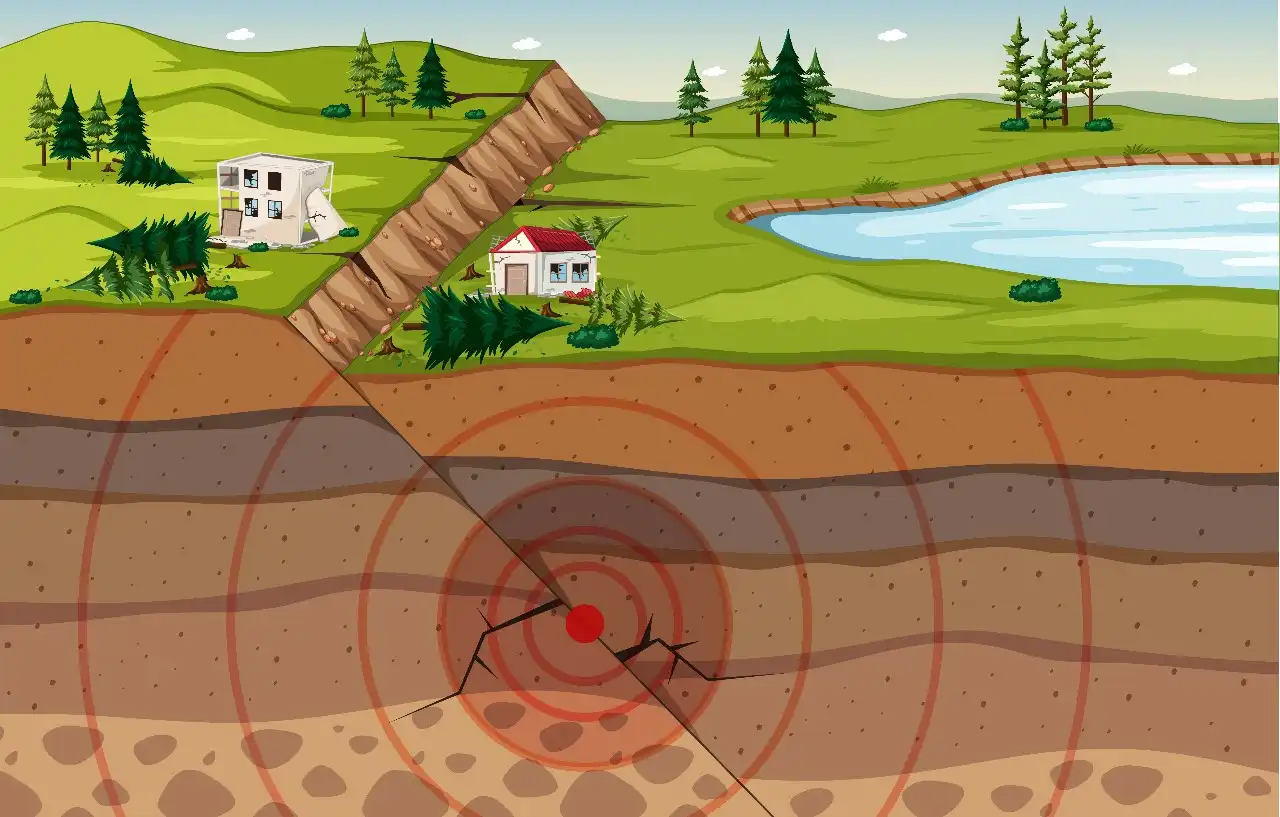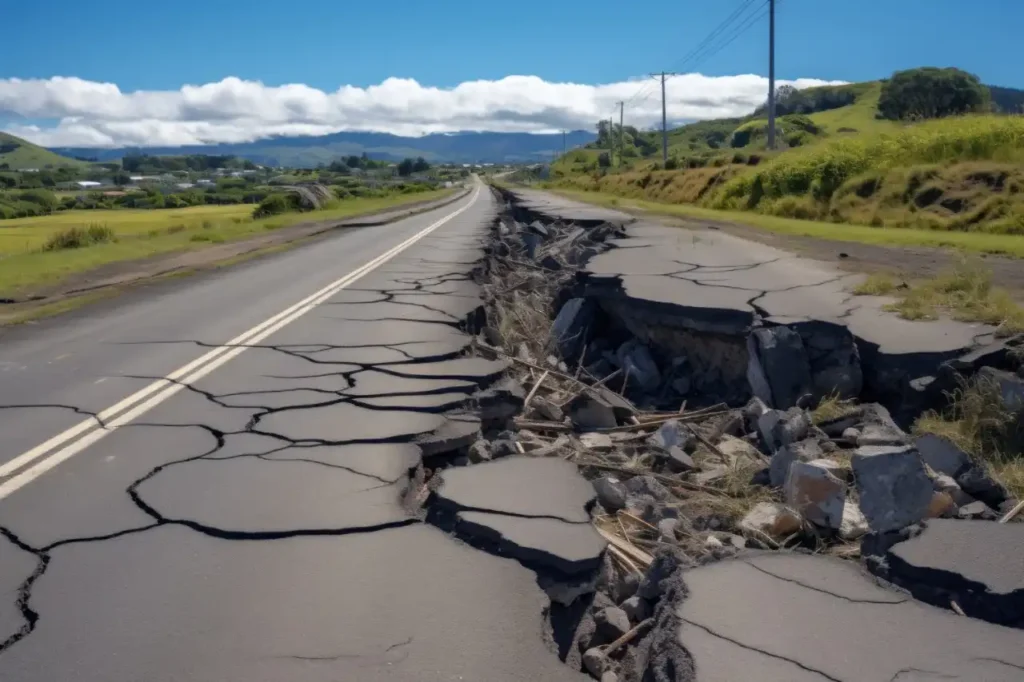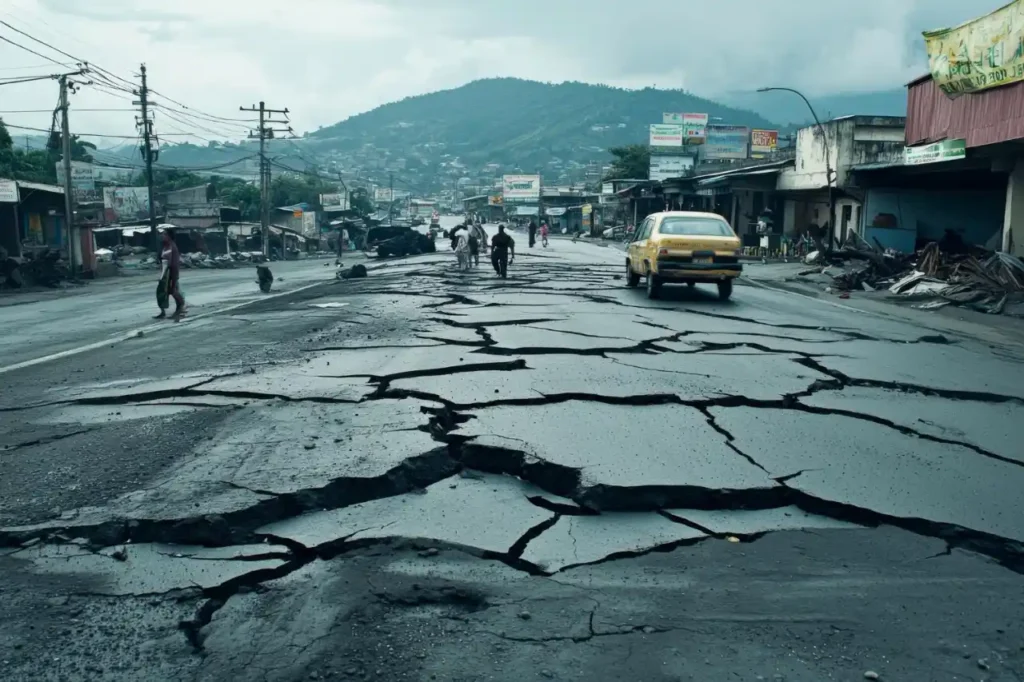Now Reading: The Shaking Earth: Understanding Earthquake Causes and the Fault Rupture Mechanism
-
01
The Shaking Earth: Understanding Earthquake Causes and the Fault Rupture Mechanism
The Shaking Earth: Understanding Earthquake Causes and the Fault Rupture Mechanism

Uncover the science behind why the Earth shakes. This guide simplifies the complex earthquake causes and fault rupture mechanism, from tectonic plate movement to the sudden release of energy along fault lines. It’s a clear, easy-to-understand explanation of how seismic events are generated, perfect for anyone curious about our planet’s powerful forces.
Have you ever felt the ground suddenly tremble beneath your feet? That’s an earthquake, and it’s one of nature’s most powerful events. But what really makes the Earth shake like that?
The simple answer lies deep beneath us, where giant pieces of our planet are constantly moving. This blog post will explore the earthquake causes and the fault rupture mechanism, explaining everything in a way that is easy to follow.
Our planet isn’t one solid ball. In fact, its outer shell, called the crust, is broken into huge puzzle pieces. Scientists call these pieces tectonic plates. Most importantly, these plates are always on the move, floating on the semi-molten layer below them.
As a result, they can slide past each other, collide, or pull apart, which sets the stage for an earthquake.
How Tectonic Plates Cause Earthquakes
Imagine you’re pushing two rough wooden blocks together. At first, they stick because of friction. But if you keep pushing, the pressure builds up until they suddenly slip past each other with a jolt.
This entire process is the foundation of the earthquake causes and the fault rupture mechanism.
The Constant Motion of Plates
The Earth’s tectonic plates are massive slabs of rock. They move incredibly slowly, usually only a few centimeters per year, which is about the same speed your fingernails grow. However, even this slow movement carries immense power. The places where these plates meet are called plate boundaries.
Consequently, these boundaries are where most of the action happens. There are different types of boundaries. Some plates crash into each other (convergent boundaries), some pull away from each other (divergent boundaries), and others slide sideways past each other (transform boundaries). In addition, each type of movement creates different kinds of stress on the Earth’s crust.
Stress Buildup Along Faults
As the plates try to move, their edges, which are rough and jagged, get stuck. The force driving the plates doesn’t stop, though. Therefore, tremendous stress begins to build up in the rocks along these stuck edges.
This stress is a form of stored energy, much like the energy you store in a stretched rubber band. Most importantly, this buildup is a key part of the earthquake causes and fault rupture mechanism.
What Triggers Fault Line Earthquakes?
The built-up stress can’t increase forever. Eventually, the stress becomes greater than the friction holding the rocks together. This is the moment that triggers fault line earthquakes.
The Snap: Fault Slip and Friction
When the stress finally overcomes the friction, the rocks on either side of the fault suddenly snap and slip past each other. This sudden movement is called a fault slip or a rupture. In other words, the stored energy is released all at once, creating an earthquake.

Think of breaking a dry stick. You can bend it for a while, and it stores the energy from your hands. But when you bend it too far, it snaps with a loud crack, releasing that energy. Similarly, the rocks at a fault line break and release their stored energy in the form of seismic waves.
The Elastic Rebound Theory
Scientists explain this process with the elastic rebound theory, a foundational concept for understanding the earthquake causes and the fault rupture mechanism. It states that as rocks on opposite sides of a fault are subjected to stress, they bend and store energy (elastic deformation). They keep bending until the stress becomes too much.
After that, the rocks snap back to an unstressed position, but at a new location. This “rebound” is what sends vibrations, or seismic waves, traveling through the Earth in all directions. Consequently, it’s these waves that we feel as the shaking of an earthquake.
Seismic Energy Release in Earthquakes and Its Effects
The moment a fault ruptures, it unleashes a massive amount of energy. This seismic energy release in earthquakes is the direct physical manifestation of the earthquake causes and fault rupture mechanism.
Seismic Wave Propagation
The energy travels in the form of waves, known as seismic waves. There are two main types of waves that travel through the Earth’s interior:
- P-waves (Primary waves): These are the fastest waves. They travel by pushing and pulling the rock, much like a Slinky toy being pushed. They can travel through solids, liquids, and gases.
- S-waves (Secondary waves): These waves are slower and arrive after the P-waves. They move the rock up and down or side to side. Unlike P-waves, they can only travel through solids.
When these waves reach the surface, they create surface waves, which are what cause most of the damage during an earthquake. Surface waves are the slowest but most destructive.
How We Measure the Shake: Earthquake Magnitude Scale
Scientists use the earthquake magnitude scale to measure the size of an earthquake. You might have heard of the Richter scale, but today scientists often use the Moment Magnitude Scale (MMS). It gives a more accurate measure of the total energy released.
Each whole number increase on the scale represents about 32 times more energy released. For example, a magnitude 6.0 earthquake releases about 32 times more energy than a magnitude 5.0. Above all, this explains why a magnitude 7.0 or 8.0 quake is so much more destructive.
Where Does an Earthquake Start?
Understanding where the shaking originates is key. For this, we need to know the difference between epicenter and hypocenter. People often mix these two terms up, but they refer to different locations.
Underground Focus of Quake: The Hypocenter
The hypocenter is the point deep within the Earth where the fault rupture actually begins. It is the true underground focus of the quake. This is where the initial slip happens and where the first seismic waves are generated. The hypocenter can be anywhere from a few kilometers to hundreds of kilometers beneath the surface.
The Point on the Surface: The Epicenter
The epicenter, on the other hand, is the point on the Earth’s surface directly above the hypocenter. It’s the location usually reported in the news because it’s the place on the map where the earthquake happened. Typically, the strongest shaking and the most damage occur at or near the epicenter.
Here is a simple table to clarify:
| Feature | Hypocenter (Focus) | Epicenter |
| Location | Inside the Earth’s crust | On the Earth’s surface |
| Definition | The actual point where the fault rupture starts | The point on the surface directly above the hypocenter |
| Energy | The source of the seismic energy release | Where the seismic waves first reach the surface |
| Shaking | Where the quake originates | Usually experiences the most intense shaking |
Why Does Stress Build Along Faults?
The reason why stress builds along faults is the constant, unstoppable movement of tectonic plates. Even when a fault is locked, the plates on either side are still being pushed or pulled by forces deep within the Earth.
Crustal Deformation and Friction
The rocks along the fault line resist this movement because of friction. Friction acts like a brake, preventing the two sides from sliding smoothly. As a result, the rock around the fault begins to bend and deform, a process called crustal deformation.
This bending stores a huge amount of elastic energy. Subsequently, the longer the fault remains locked, the more energy it stores. This is why areas that haven’t had an earthquake in a long time might be at risk for a very large one in the future.
Subduction Zone Stress
Some of the most powerful earthquakes in the world happen at subduction zones. This is where one tectonic plate dives, or subducts, beneath another.
This process, which creates immense friction and stress, is one of the most powerful examples of the earthquake causes and fault rupture mechanism.
The friction between the two massive plates is immense, causing them to lock together for centuries. Meanwhile, stress builds up continuously.
When the rupture finally happens, it can cause mega-earthquakes with a magnitude of 9.0 or higher, often triggering tsunamis. The 2011 earthquake in Japan is a recent example of this powerful process.

Foreshocks, Aftershocks, and the Fault Rupture Dynamics
An earthquake is rarely a single event. The fault rupture dynamics are complex, and the main quake is often preceded and followed by smaller tremors.
Fully grasping these dynamics is essential to understanding the complete picture of the earthquake causes and fault rupture mechanism.
Foreshocks: The Clues Before the Big One?
Sometimes, a large earthquake is preceded by smaller quakes in the same area, known as foreshocks. Scientists believe these are caused by small slips that happen as the main fault rupture begins to develop.
However, it’s impossible to know if a small earthquake is a foreshock until the bigger earthquake, or mainshock, happens.
Aftershocks: The Earth Settling Down
After the mainshock, the area around the fault is unstable. The crust needs to adjust to the new stress distribution caused by the main fault slip. This adjustment process triggers a series of smaller earthquakes called aftershocks.
Aftershocks can continue for days, weeks, or even years after a major earthquake. While they are smaller than the mainshock, they can still be strong enough to cause significant damage to buildings already weakened by the main event. In other words, they are a dangerous and stressful part of the earthquake process.
Conclusion: A Constantly Changing Planet
In conclusion, the primary earthquake causes and fault rupture mechanism are all tied to the dynamic and restless nature of our planet. The slow, steady movement of tectonic plates builds up immense stress along fault lines. When that stress is suddenly released, the ground shakes.
Understanding these processes helps us prepare for earthquakes. By studying fault lines and monitoring crustal deformation, scientists can identify areas at risk. This knowledge allows us to build stronger buildings and create better emergency plans.
The Earth will always be a geologically active planet, but by understanding why it shakes, we can learn to live more safely on its surface.
Summary
Uncover the science behind why the Earth shakes. This guide simplifies the complex earthquake causes and fault rupture mechanism, from tectonic plate movement to the sudden release of energy along fault lines. It’s a clear, easy-to-understand explanation of how seismic events are generated, perfect for anyone curious about our planet’s powerful forces.
FAQs
The primary process involves tectonic plates getting stuck due to friction, building up immense stress over time. The study of earthquake causes and the fault rupture mechanism explains that when this stress overcomes the friction, the fault ruptures, releasing energy as seismic waves that we feel as an earthquake.
The elastic rebound theory is a key part of understanding earthquake causes and the fault rupture mechanism. It describes how rocks bend and store elastic energy as stress builds. When the rocks break and “rebound” to their original shape, this stored energy is violently released, causing the earthquake.
Subduction zones create some of the most powerful seismic events because one plate diving beneath another generates extreme friction and stress. This scenario is a prime example of the earthquake causes and fault rupture mechanism, as the massive energy build-up can lead to mega-earthquakes when the fault finally slips.
While geologists have a strong understanding of the earthquake causes and the fault rupture mechanism, they cannot predict the exact time and place an earthquake will occur. They can identify high-risk areas by monitoring stress build-up along faults, but a precise forecast is not yet possible.
The hypocenter, or focus, is the starting point of the earthquake deep within the Earth’s crust. It is the exact location where the slip begins, making it the origin of the entire event. Understanding the hypocenter is fundamental to analyzing the earthquake causes and the fault rupture mechanism for any seismic event.

Ethan Cole is an American journalist with expertise across weather, tech, travel, and culture. With over 15 years of experience, he delivers sharp, reader-friendly stories that simplify complex topics and connect with audiences worldwide.
Stay Informed With the Latest & Most Important News
Previous Post
Next Post
-
 01Happy Gilmore 2: Your Complete Guide to the Golf Comedy Sequel
01Happy Gilmore 2: Your Complete Guide to the Golf Comedy Sequel -
 02Joe Root’s Test Runs: England’s Batting Genius in Focus
02Joe Root’s Test Runs: England’s Batting Genius in Focus -
 03The Bad Guys 2 (2025): Everything We Know So Far
03The Bad Guys 2 (2025): Everything We Know So Far -
 04Demon Slayer: Kimetsu no Yaiba The Movie: Infinity Castle Tickets – Your Guide to the Epic Anime Event
04Demon Slayer: Kimetsu no Yaiba The Movie: Infinity Castle Tickets – Your Guide to the Epic Anime Event -
 05RTX 50 Series Unleashed: Next-Gen Gaming Power Awaits!
05RTX 50 Series Unleashed: Next-Gen Gaming Power Awaits! -
 06The Naked Gun 2025: What to Know About the Comeback Comedy Starring Liam Neeson
06The Naked Gun 2025: What to Know About the Comeback Comedy Starring Liam Neeson -
 07Freakier Friday 2025: Full Cast Breakdown, Plot Twists, Musical Throwbacks & Streaming Info
07Freakier Friday 2025: Full Cast Breakdown, Plot Twists, Musical Throwbacks & Streaming Info














